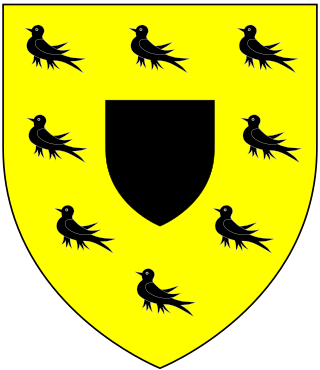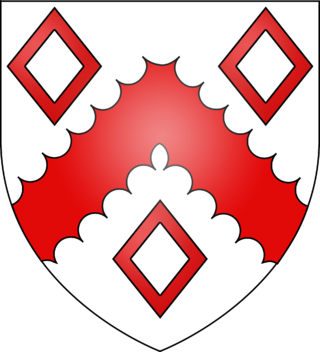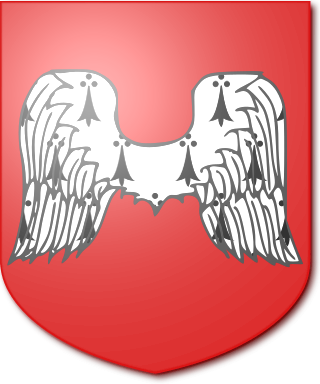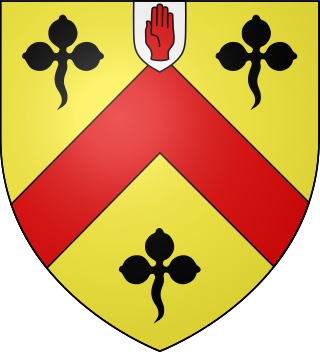Sir John Rogers, 1st Baronet was an English merchant and Member of Parliament.
Sir Robert Brown, 1st Baronet was a British politician and merchant.

Sir William Brownlow, 1st Baronet of Humby in Lincolnshire, was an English politician and barrister.
Sir Anthony Thomas Abdy, 5th Baronet, KC was a British barrister and Whig politician.
Sir Matthew Blakiston, 1st Baronet was a British merchant, grocer and baronet.
Sir Robert Clarke, 2nd Baronet was a British politician who sat in the House of Commons from 1717 to 1722.

There have been twenty one baronetcies created for persons with the surname Williams, eight in the Baronetage of England, three in the Baronetage of Great Britain and ten in the Baronetage of the United Kingdom. Only six of the creations are extant as of 2017.
Three baronetcies were created for persons with the surname D'Oyly, two in the Baronetage of England and one in the Baronetage of the United Kingdom. One creation is extant as of 2008.
The Baronetcy of Goodricke of Ribston was created in the Baronetage of England by King Charles I on 14 August 1641 for his loyal supporter John Goodricke of Ribston, Yorkshire. He represented Yorkshire in the Cavalier Parliament from 1661 to his death.

Sir Charles Barrington, 5th Baronet was an English Tory politician.
Sir John Delaval, 3rd Baronet, was an English politician.

Sir Robert Bacon, 3rd Baronet of Redgrave (1574–1655) was an English landowner.
Sir Henry Beaumont, 2nd Baronet was an English politician.

Sir Thomas Spring, 3rd Baronet of Pakenham Hall in Pakenham, Suffolk, was an English baronet and landowner who served as High Sheriff of Suffolk in 1696.

The Rayney Baronetcy, of Wrotham in the County of Kent, was a title in both the Baronetage of Nova Scotia and the Baronetage of England. It was first created in the Baronetage of Nova Scotia on 19 December 1635 for Sir John Rayney of Wrotham Place, Wrotham, Kent. He was then created a Baronet in the Baronetage of England on 22 January 1642, with the same territorial designation. Rayney's father John Rayney, of West Malling, was a merchant and Alderman of London who bought Wrotham Place which became the family seat. The first Baronet had been knighted at the Coronation of Charles I in 1626. He served as High Sheriff of Kent in 1646. On the death of the fifth Baronet in 1721 the English baronetcy became extinct while the Scottish baronetcy became dormant.

There have been two baronetcies- both extinct- granted to the Willises of Fen Ditton, both in the Baronetage of England.

The Blount Baronetcy, of Tittenhanger in the County of Hertford, was created in the Baronetage of England on 27 January 1680 for Thomas Pope Blount. In the 16th century Elizabeth Blount, daughter of Sir Walter Blount of Blount Hall, Staffordshire, married Sir Thomas Pope of Tittenhanger, Herefordshire. Her nephew Sir Thomas Pope Blount inherited the estate at Tittenhanger on her death. The first Baronet was the grandson of Sir Thomas and son of the traveller Sir Henry Blount. He represented St Albans and Hertfordshire in the House of Commons. The title became extinct on the death of his grandson, the third Baronet, in 1757.

The Abdy baronetcy, of Albyns, in the County of Essex, was created in the Baronetage of England on 9 June 1660 for Robert Abdy. It became extinct on the death in 1759 of the 4th baronet.

The Abdy Baronetcy, of Moores, in the County of Essex, was created in the Baronetage of England on 22 June 1660 for John Abdy. It became extinct on his death c.1662.

The Astley Baronetcy, of Patshull in the County of Stafford, was created in the Baronetage of England on 13 August 1662 for Richard Astley. The second Baronet represented Shrewsbury and Shropshire in the House of Commons. The title became extinct on his death in 1772.
This page is based on this
Wikipedia article Text is available under the
CC BY-SA 4.0 license; additional terms may apply.
Images, videos and audio are available under their respective licenses.










